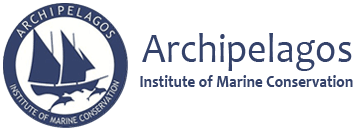My name is Liam P. Kennedy. I am from Annapolis, Maryland, U.S.A. and I am currently pursuing my Bachelors in Environmental Studies & Sciences: Geographic Information Systems (GIS) at Towson University. Currently, I am on a summer placement with Archipelagos, from June 2021 until late August 2021.
My project at Archipelagos is to create maps of an endemic species of seagrass, Posidonia Oceanica. Posidonia oceanica seagrass in the Mediterranean is one of the oldest living organisms on Earth, with a single clonal colony estimated to be over 100,000 years old. Posidonia oceanica seagrass beds are protected habitats that play a fundamental role in the health and productivity of Mediterranean marine ecosystems. My program uses the most efficient technique to map seagrass meadows which was developed by Archipelagos. Using kayaks equipped with sonar downscan we collect bathymetric data on the seafloor. We are then able to process this data to determine areas that show Posidonia seagrass meadows. Finally using GIS we can create maps showing areas of seagrass meadows and publish this data to international conservation organizations.
The benefits of this species of seagrass include reduction of coastal erosion, providing purification of the air and the ocean whilst also offering shelter and breeding grounds for numerous species. However, the seagrass meadows shrink due to, among others, fishing, pollution, ocean acidification, coastal activities and invasive plant and animal species. The importance of this project is to correct the inaccuracies of the 2015 seagrass maps created by the Hellenic Centre of Marine Research (HCMR). When analyzing these maps it was discovered that the official seagrass maps consist of a substantial underestimation of the actual seagrass coverage. This may cause serious damage if, as a result of this, harmful human activities take place in areas covered by seagrass.
My daily life in the program consists of planning transects for and leading kayak sonar surveys out of one of the 37 beaches located on Lipsi Island. A lot of other time is spent doing geoprocessing of sonar data using programs such as QGIS, Reefmaster, and Google Earth. I always look forward to visiting new locations and collecting data on seagrass meadows.

